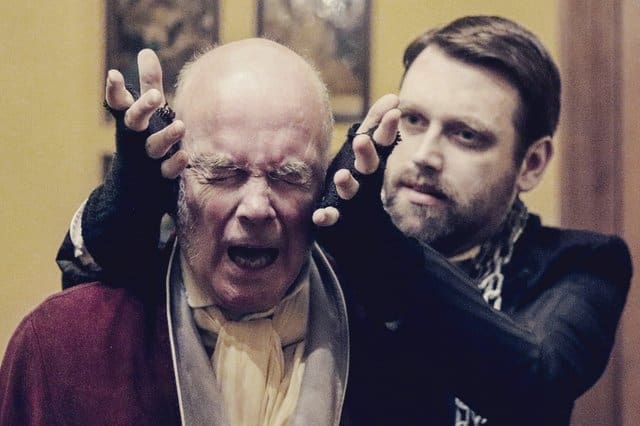Christmas cheer is descending on the city, and nowhere more than at Campbell House. The historic museum is the perfect venue for The Three Ships Collective’s adaptation of A Christmas Carol, a rare example of a site that is from the same era as the story and retains its aesthetic. Most authentic Victorian buildings are poorly suited for any theatre experience – let alone an immersive, mobile one – but Campbell House more than rises to the challenge. As audience members shamble between rooms, they can appreciate the free tour of a Toronto landmark while imagining themselves traipsing through Scrooge’s cavernous townhouse or as ghostly voyeurs to his repressed memories – or as the children Marley describes, noses pressed against shop windows with the gentle lilt of carols in the air.
This can break the immersion, with spirits and Scrooges stuck in contemplative pause as the final viewers file into the room, but no more so than the usual scurrying of stagehands as the lights fade to black. In return, the audience is treated to a performance that gets much more out of its venue and its characters. Marley confronting Scrooge and eventually reconciling with him is a powerful plot device, but his biggest role here is non-verbal as a chain-clad Christopher Fowler beckons viewers between rooms in handily seamless transitions. As we see his spiritual envoys go to work, we feel in on the joke – and personally invested in Scrooge’s redemption.
For A Christmas Carol to work, Scrooge’s journey must be believable. Our glimpses into the miser’s past – his father breaking the news of his bankruptcy to a chipper young Scrooge, Belle breaking a bookish yet handsome Scrooge out of his shell – do the necessary and difficult work of humanizing him, explaining his behaviour without excusing it. The Scrooges across the ages – Makenna Beatty/Chloe Bradt, Mike Hogan, and Thomas Gough – paint a picture of a complex and changing man but clearly the same man. In a recent interview, Gough notes the danger of showing Scrooge as “a one-dimensional character who suddenly turns into a totally different one-dimensional character”; it’s to his credit, and our benefit, that he avoids that despite the demands of the work.
The show is sustained by a cast that is an ensemble in the truest sense. Other than Marley and Scrooge, every actor assumes several roles, reminding us that all this is a production by Marley with a specific purpose but also showing off their ranges as performers. The Ghosts are especially notable here: Tiffany Martin goes from bubbly and charming Belle to become a harbinger of death, Christopher Lucas is equally and fantastically flamboyant as Ghost of Christmas Present and an urchin looking for a quick buck, and Amy Marie Wallace steps out of her shroud as Ghost of Christmas Past to provide the violin music that introduces and enhances the show.
Director Sarah Thorpe and her cast can be truly proud of what they’ve accomplished here. By the time you’re reading this, it may be too late – audiences must be small to maraud around ancient buildings safely, and tickets sold out quickly – but, with any luck, this will be a fixture of Christmas season at Campbell House and spread festive joy to even more audiences in Christmases Yet to Come.

